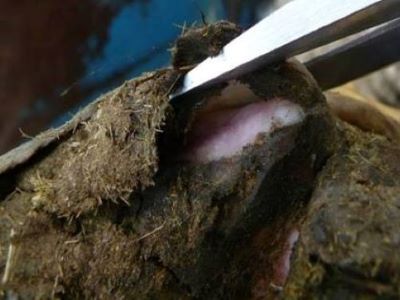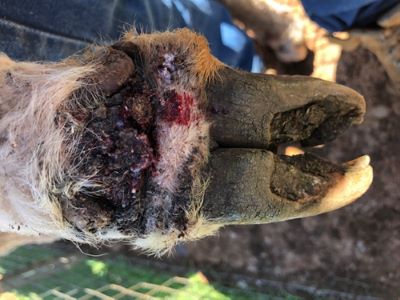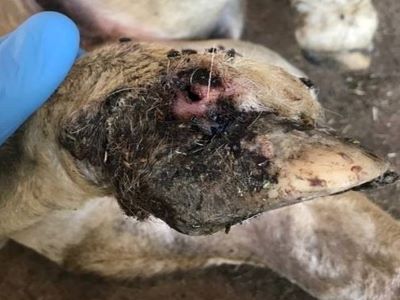Andrew Biddle, Northern Tablelands Local Land Services District Vet and Animal Biosecurity & Welfare Team Leader
Current seasonal conditions are great for pasture growth and our livestock are really benefiting from the warmer weather we are now seeing. With this warm weather and excellent pasture growth, there are still a few things to watch out for.
One of these is an increase in lameness in sheep. A couple a months ago we saw foot abscesses in heavy ewes on the point of lambing but now we are seeing lameness more broadly and from a number of issues.
The first is footrot. Fortunately, virulent footrot is currently uncommon on the Northern Tablelands. However, with sheep being so valuable and being trucked all over the country, it is important to check out lameness problems where virulent footrot could be involved.
Virulent footrot is characterised by a moist dermatitis between the toes that progresses to underrunning that causes separation between the layers of the sole of the sheep's foot. There is rarely pus and it smells like rotten potatoes.

Benign footrot can look a lot like the virulent form when seasonal conditions are ideal but self cures when sheep move to drier paddocks or the season changes. It is important to know if you have benign or virulent footrot as you cannot sell sheep infected with virulent footrot to other people directly or through saleyards. The Local Land Services team is available to assist you to determine what may be causing lameness in your flock.
Another condition we are seeing this year that has caused lameness is strawberry footrot which is actually in no way related to the two conditions just mentioned. Strawberry footrot is caused by a bacterial infection on the skin surface. It is also known as greasy heal and causes dermatitis in sheep as well as rain scald. The bacteria gets a real go on when things are hot and wet.

We have also seen scabby mouth lesions around the coronary band of young sheep. These can become infected and cause lameness.
Finally, foot abscess doesn't just affect pregnant ewes and rams. Where feet get soft in the wet grass, skin injuries occur and bacteria can enter the wound. With foot abscess you will always get swelling and pus. Animals are severely lame and will stand with the foot off the ground.







